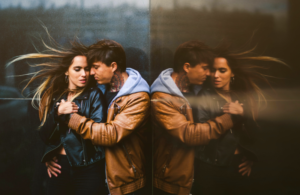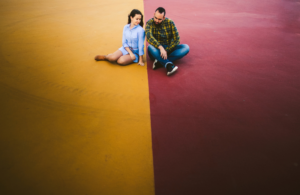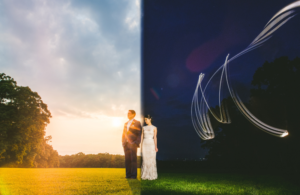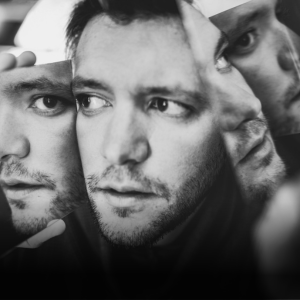124: Sam Hurd – Game Changing AI Influences & Creative Composition Originality
July 15, 2024
“I take a ton of bad shots, bad ideas where things just don’t work out. And I think that also is one key to it: not being too hard on yourself or just not being afraid to take a bad photo and know when you’ve crossed that line.”
SAM HURD
Hey everyone! It’s Sally here, from Studio Ninja. Today’s episode is all about Sam Hurd!
Starting as a political news and celebrity portrait photographer in DC, Sam was instantly drawn to wedding photography as a space to promote more inventive ideas. Sam’s focus is on photographic techniques that are deceptively simple but have the potential to transform difficult or uninspiring shooting environments into one-of-a-kind opportunities for every photo made.
Check out some of the biggest points from Sam’s interview below:
How do you come up with your unique compositions in photography?
In my photography, everything is definitely completely improvised. I never walk into a shot with a clear idea of how it’s going to turn out. There’s a sort of hierarchy of what I look for, which took me years to realize and lean into. But generally, I let the light guide me and then narrow down compositions from there. Shapes play a big part in my work because they give a photo a clear intention. Whether it’s a shape pointing to or framing the subject, I love simplifying compositions to basic shapes like circles and triangles. It adds a clean, intentional, and playful feel to the images, making the viewer’s eye bounce around rather than just seeing one thing and moving on.
I have two main approaches during shoots. One is hands-off, where I document things in a straightforward way, capturing the story for the couple. Occasionally, I’ll add creative touches, like using a prism or creating an interesting silhouette. However, I don’t push myself creatively until I have control, which usually happens when I’m directing the couple in a specific spot for a composition. That’s when I really kick it into overdrive. For other parts of the wedding, like cake cutting, I don’t feel the need to be as creative.
This creativity didn’t come naturally; it evolved over time. As I upgraded my camera equipment, everything became a bit easier. Nowadays, autofocus is reliable, but ten years ago, it was a major hurdle. Nobody shot wide open because autofocus wasn’t dependable. As I became more technically proficient and learned how to interact with people to make them comfortable, I could solve problems easily and focus more on creativity.
The process remains highly improvised. I take a ton of bad shots and have plenty of ideas that don’t work out. A key aspect is not being too hard on yourself and knowing when to move on to the next idea. It’s all about playing around and cutting ideas without making clients feel self-conscious. From their perspective, the day is perfect and all the photos are great, even though I know I’ve experimented a lot and discarded many ideas.

How do you balance creative freedom with your clients wishes?
Sometimes I explain my creative choices to clients, especially if we’re in an unconventional location, like standing next to a dumpster. In those cases, I’ll mention that we’re just trying something different to avoid any awkwardness. However, it’s rare for clients to ask for more photos from a particular spot or to question my creative decisions. Even when I’m shooting in a way that doesn’t accurately reflect our surroundings, I don’t spend more than a few minutes on a single idea. We usually just move around, and I try not to linger in one place too long to prevent the clients from becoming too invested in a specific shot.
Typically, if I have an hour with a couple, like during an engagement session, I take about a thousand photos and deliver around one hundred to one hundred and twenty. Even when I have complete creative control, I make sure to include some normal photos as well. I understand that the photos are not just for the couple; their parents, grandparents, cousins, and other family members will also want to see them. So, I aim to create a collection that has something for everyone.

Do you have a signature piece of equipment you always have with you?
One of my signature tools is the prism. I was one of the first photographers to use a prism, particularly the specific one I prefer. My fascination with prisms began when I was in a band called Prisms in college. After finishing our first record, we were brainstorming ideas for album art, and I found a prism on Amazon. We didn’t end up using it for the cover, but it became a fascinating tool for photography. I always carry it with me, along with a small one-inch by one-inch piece of aluminum pipe, which creates a crazy flare effect when held in front of the lens. There are a few other items I bring along, but I don’t force myself to use them unless it feels right for the mood or environment.
Interestingly, if a couple requests a prism shot, I often feel reluctant because I strive to create something surprising and unique for them. It’s rare for clients to ask for specific ideas they’ve seen before, which I’m grateful for. I believe this comes from maintaining a well-balanced portfolio that doesn’t overemphasize any one technique. For instance, I might include prism shots sporadically rather than featuring them in every other photo.
Regarding my gear, I’m meticulous about organizing my equipment bags. When I buy a new bag, I remove all the interior slots and redesign the layout to suit my needs. This customization reduces mental friction, which I find crucial for a seamless and free-flowing creative process. Even small things like dealing with lens caps can be a distraction. To minimize this, I avoid using lens caps altogether, as they can add unnecessary mental load and disrupt the flow of shooting.

Thank you!
Thanks again to you all for joining us and a huge thanks to Sam for joining us on the show!
If you have any suggestions, comments or questions about this episode, please be sure to leave them below in the comment section of this post, and if you liked the episode, please share it using the social media buttons you see at the bottom of the post!
That’s it for me this week, I hope you all enjoyed this episode.
See you soon,
Sally

About Sam Hurd
Starting as a political news and celebrity portrait photographer in DC, Sam was instantly drawn to wedding photography as a space to promote more inventive ideas. Sam’s focus is on photographic techniques that are deceptively simple but have the potential to transform difficult or uninspiring shooting environments into one-of-a-kind opportunities for every photo made.
